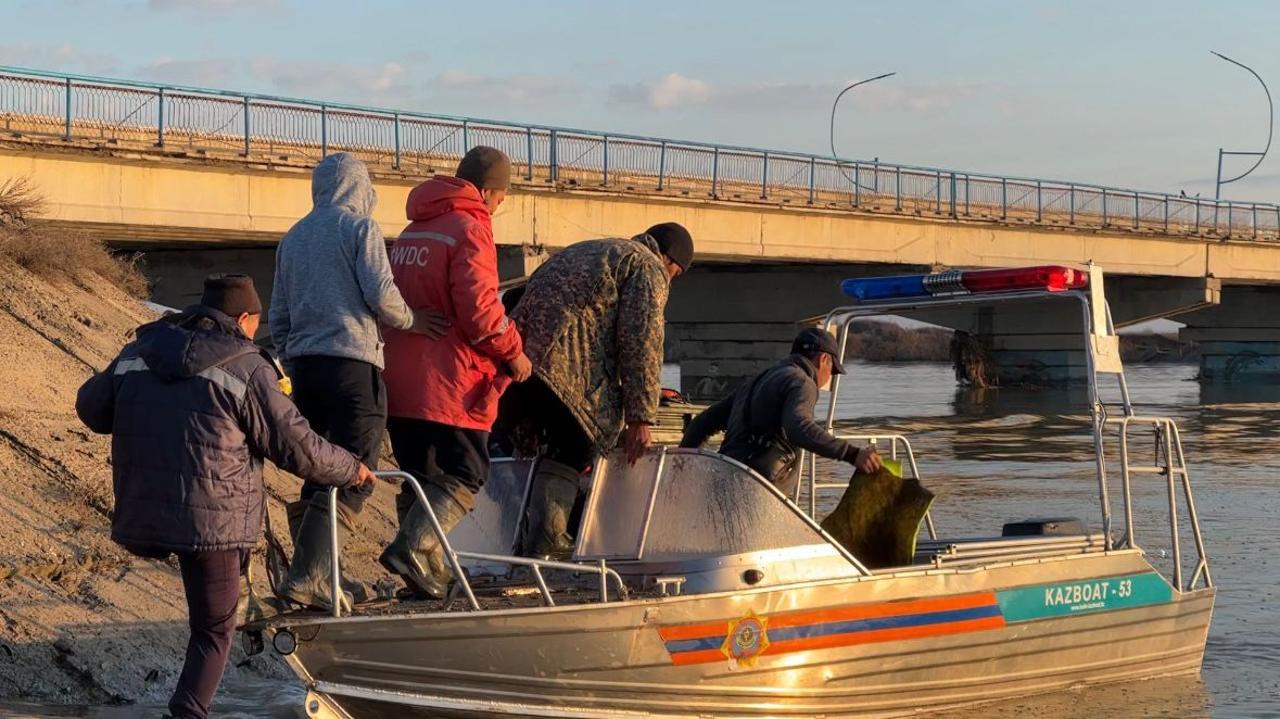ASTANA – As of April 9, over 86,000 people, including 29,000 children, have been rescued and evacuated since the floods began in Kazakhstan, reported the Kazakh Ministry of Emergency Situations.

Photo credit: Ministry of Emergency Situations
According to the ministry, the involved aircraft rescued 2,823 people, of whom 865 were children. Temporary accommodation centers housed 8,472 people, including 4,055 children. Over 81,000 farm animals were relocated to safe places. The hotline received 1,130 calls, with psychologists offering emergency psychological assistance to those affected by the flooding.
Meanwhile, water levels in the country’s rivers continue to rise. Water reservoirs in the East Kazakhstan Region are filled to an average of 62% and are expected to reach the highest levels this week, spokesperson for the Ministry of Water Resources and Irrigation Moldir Abdualiyeva said at an April 8 briefing.
Minister Nurzhan Nurzhigitov continues to exchange hydrological data with the Russian Federal Service for Hydrometeorology and Environmental Monitoring due to the flood flow formation along the Tobol and Zhaiyk (Ural) rivers.
The Tobol River is an important tributary of the Yertis (Irtysh) River. While the Tobol River primarily flows through Kazakhstan, its upper reaches extend into Russia.
Another surge in water levels is predicted at Zhaiyk River, which flows from Russia to Kazakhstan. Water discharge from the Iriklinsky hydroelectric complex in Russia, which also witnesses flooding, remains consistent at 1,680 cubic meters per second.
“This water can reach the borders of Kazakhstan in 15-20 days,” Abdualiyeva warned. “The ministry and the administrations of the West Kazakhstan and Atyrau Regions clear river beds of ice cover and eliminate congestion to prevent flooding.”
Four large reservoirs in the West Kazakhstan Region are filled to an average of 65%. The region is witnessing an increase in the level of the Chagan River, a tributary of the Yertis River. An inflow into the Chagan reservoir is currently at 690 cubic meters per second.
Reservoirs in the Akmola and Aktobe Regions are full, with the peak of the flood having passed. The most critical and intense period of flooding has also passed in the Karagandy Region.
Floods persist in the Kostanai and North Kazakhstan Regions. In the Atyrau Region, water levels in the Zhem River, a river in Kazakhstan, part of the larger basin of the Ural River, have begun to decline.
The ministry has initiated the establishment of a national hydrogeological service to address issues related to the rational use of groundwater, including drinking water supply, irrigation, and livestock grazing. This service will conduct exploration work and state monitoring of groundwater resources.
As Kazakhstan continues to address the rising waters, international solidarity and support are coming.
Azerbaijan’s Ministry of Foreign Affairs expressed condolences to the people of Kazakhstan on April 8.
“Deeply saddened by devastating floods in brotherly Kazakhstan. We express sympathy to the people who have been affected by this disaster,” the ministry wrote on its X account.


